They say good things come in small packages, and they don’t get much smaller than Zuuli, which is about the size of a pack of playing cards. Zuuli is a card game from Unfringed, where players are building and upgrading enclosures at their wildlife parks, while rescuing the animals who’ll live there. Over the course of three rounds (years at the wildlife park), your park will grow, as will your menagerie of animals, and the player who has the most valuable, satisfied animals, is the winner.
Drafting giraffes
Zuuli is a game of card-drafting and set-collection at its heart. You choose one of the cards in your hand to add to your park, then pass the rest to the next player and repeat, until all the cards are claimed. For your first couple of games you’ll probably be concentrating on taking what you want, but even that presents some tricky choices. More often than not you’ll be holding a couple of cards you really want, but you know you can only choose one. Then you’ve got a couple of minutes of nail-biting anxiety waiting for that hand of cards to make it back around to you to see if somebody took your precious card.
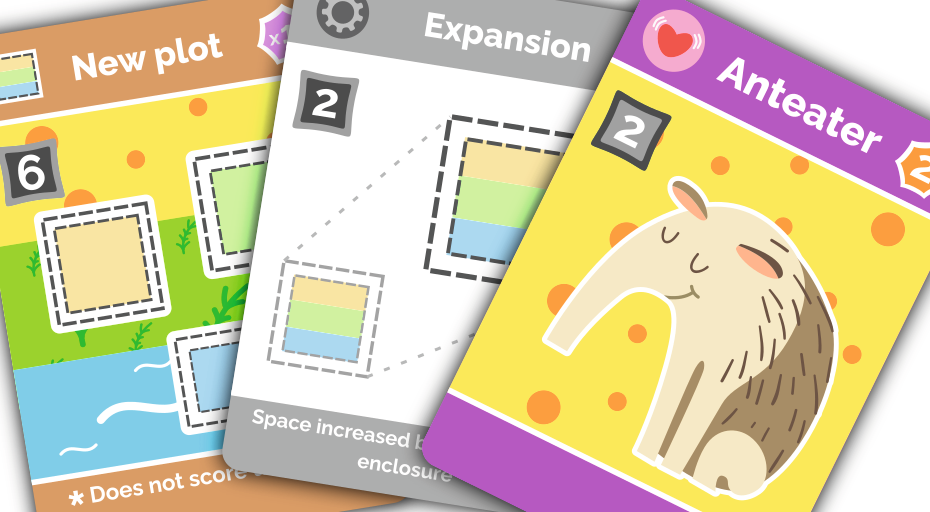
Once you get the hang of the game you’ll start looking to make the Big Brain plays. Not content with just concentrating on your own little park, you start looking at what everyone else has going on. Maybe you want to take that grizzly bear because he’s worth good points to you, but then you take a sneaky peek at your neighbours park and notice that the tree frog you’re holding would score really well for them. What to do, what to do…
If you’ve played anything with drafting and set-collection in the past, that description will sound really familiar, and probably pretty enticing. The formulae are tried and tested, but they endure for a reason. They work, and fit really nicely with one another.
Fierce and friendly
What separates Zuuli from other games of its ilk is the development phase. Claimed cards are placed face-down. Everyone flips them at the same time, and then attempts to build the best park from what they’ve got. Animals have to be matched to habitat types, and each enclosure has a certain maximum size it can sustain. Friendly animals play nicely together, but fierce ones can’t share with any other type, lest they turn their lodgers into lunch.
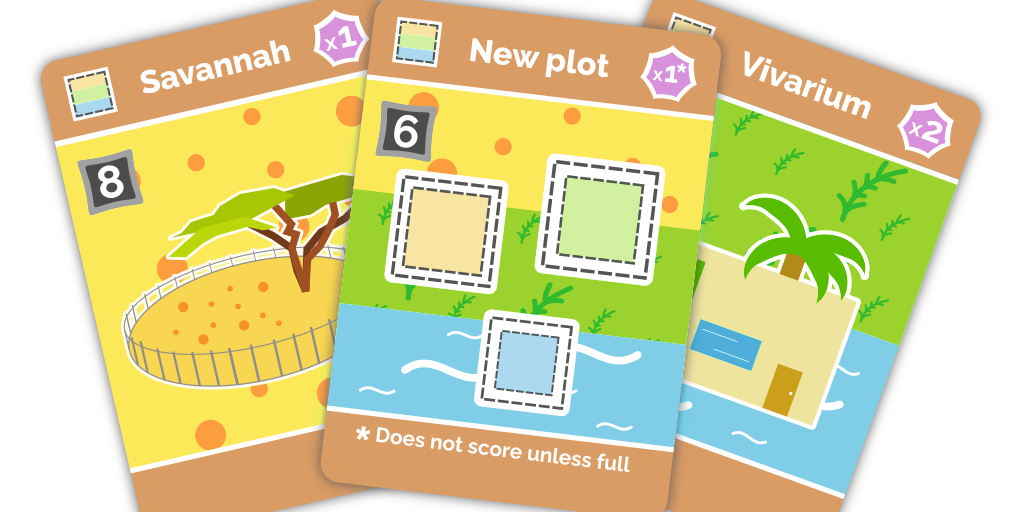
When you throw in the upgrades available which change rules among other things, there are a lot of different ways to build your park. Where it gets really interesting is in the second and third rounds. During the develop phase in those later rounds, you can rearrange your park to accommodate your new cards, which might mean your park looks very different at the end of the game, compared to how it started.
It’s a really nice mechanism, and I really like how the drafting phase is full of people eyeing each other up, seeing what’s in their park already, but once you get to the development, the atmosphere changes. Everyone’s eyes are down on their own park, trying to make a jigsaw out of pieces that don’t necessarily fit together. In my house we quickly developed what became known as the ‘Dad rule’, where we set a timer for a couple of minutes for the develop phase. Apparently I spend too long trying to optimise my zoo and everyone gets bored waiting. Well excuuuuuse me for being a perfectionist.
Splay play
The part that people find trickiest, in my experience, is visualising their wildlife park. Everything is a card of the same size: the habitats, the upgrades, the holding pens, and the animals themselves. The way the enclosures are depicted in the game is to place the enclosure on the bottom, and the upgrades and animals connected with it are placed on top, and then splayed, so you can see the edges and tops of the cards. That way you can see both the size of the enclosures and animals, and their points.
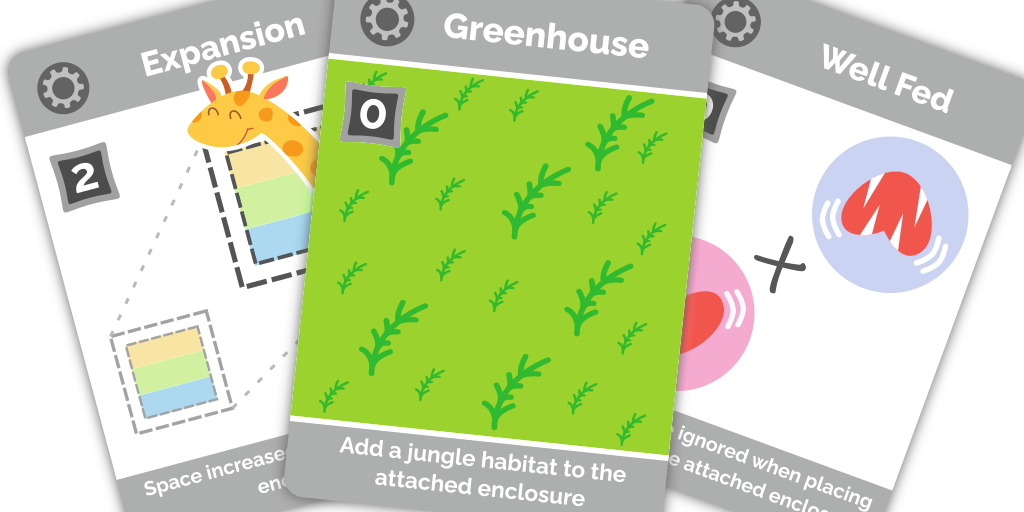
It might take you a couple of plays just to get that to feel natural. It’s not a problem for most, but for younger players (and older ones too…), you’ll need to explain how this works and why it’s done this way. My son asked me why the enclosures aren’t boards like ‘that other animal game’ (Zooloretto), but it was quite difficult to explain to him that the reason this game works so well and offers so much variety, is because everything looks the same from the back.
The artwork and graphic design is great. The animal illustrations are really pretty, and very cute, with bold, bright colours throughout. Numbers and icons are clear and clean, and the three different colours which designate which habitat types are really obvious, regardless of how much of the card is covered.
Final thoughts
Zuuli is a really nice card game. We’ve had lots of fun with it in my house, and no two games have been even remotely similar. There are so many combinations of cards that work, and those oh-so-clever upgrade cards really help keep things fresh, and offer new opportunities for cunning. The cards in my preview copy are those plastic-feeling, slippery yet durable ones. I don’t know what will be in the final version, but these worked really well. Small hands might have trouble holding a 9-card hand at the start of a two-player game though.
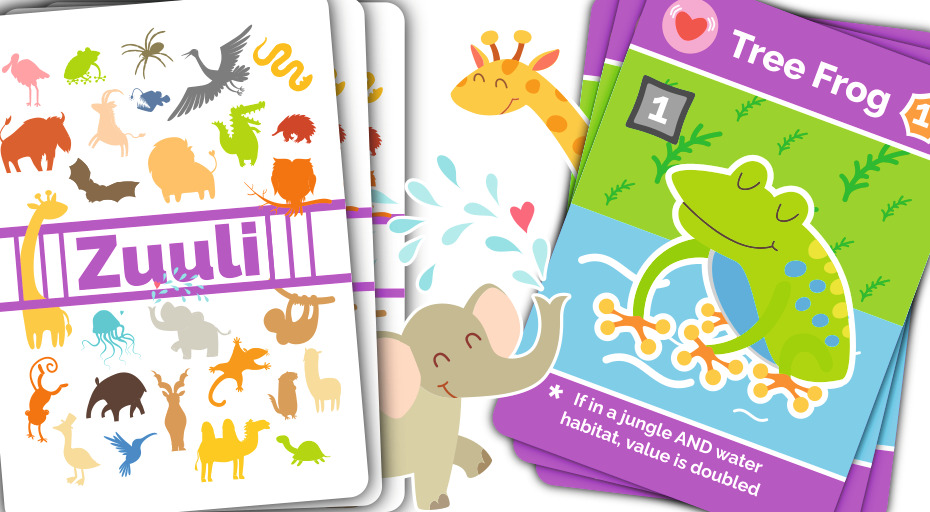
I’ve covered a few games here recently which feel like they could easily be much older games handed down through generations (Foul Play, for example), ones you just hadn’t seen before, and Zuuli is another of these. It’s very simple to learn and play, compact enough to take anywhere, and you’ll be finished in 15-20 minutes. Whether you’re a tactical player like me, who wants to optimise everything, or someone more like my son who proudly announces “I’m going to get all the frogs!”, you’ll have lots of fun.
Designer Chris Priscott has put together a really good game in Zuuli, and the hours and hours of playtesting poured into it are reflected in the polished and well-rounded game it’s become. You can back it on Kickstarter as soon as it launches on the 7th of September 2021 by following this link.
Preview copy kindly provided by Unfringed. Thoughts and opinions are my own.
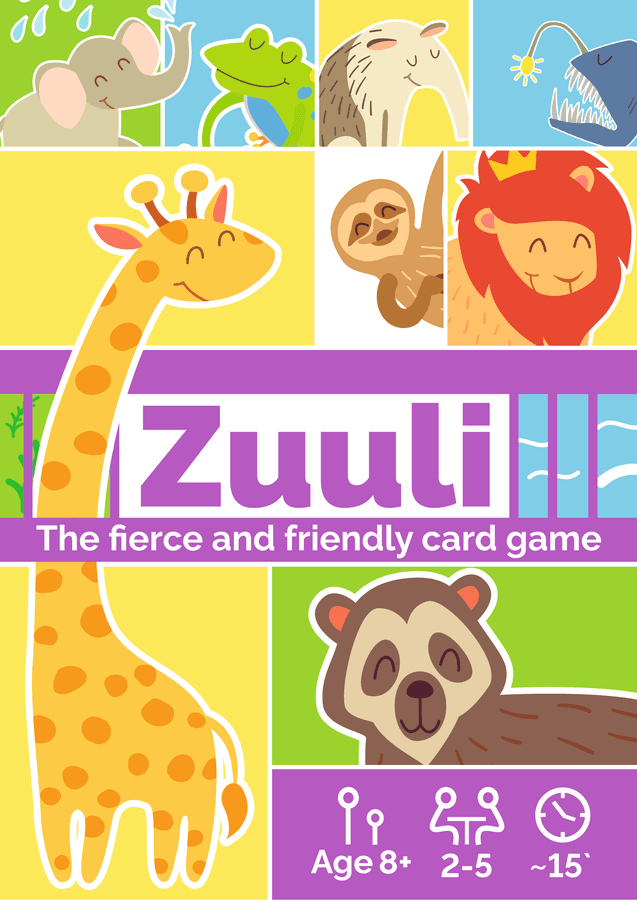
Zuuli (2021)
Designer: Chris Priscott
Publisher: Unfringed
Art: Chris Priscott
Players: 2-5
Playing time: 15-20 mins

Such a huge smile on my face when reading this! I’m so glad it went down well with both you and your family and thank you for the wonderful preview. I might even have to add the ‘Dad Rule’ to the official ruleset 😉
Ooh don’t do that, I’ll feel victimised 🙂 To be fair though, I think most people wouldn’t take as long as me, I just have severe Competitive Dad Syndrome